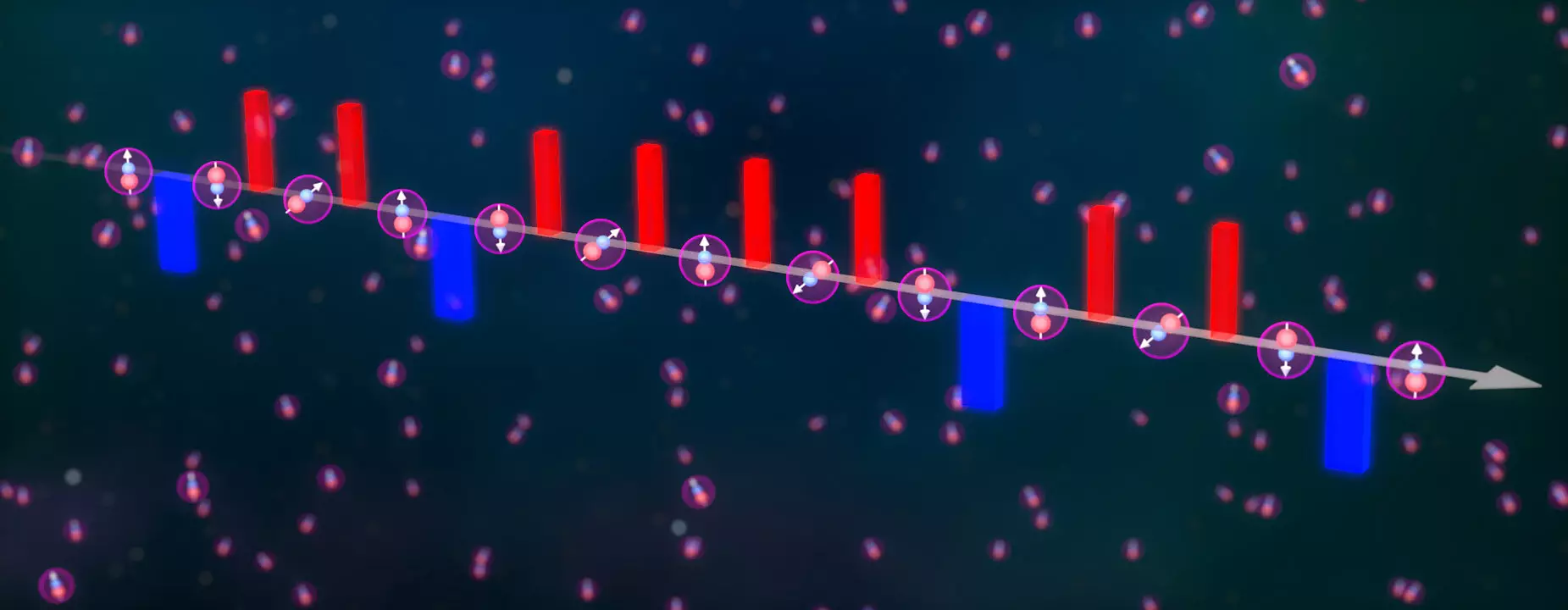Quantum spins are a foundational element of many phenomena that intrigue physicists. They play a critical role in various technologies, notably superconductors and magnetic materials. However, creating systems in the laboratory that accurately replicate these quantum interactions remains a complex challenge. Recent advancements in this field, as reported by researchers from JILA and the National Institute of Standards and Technology (NIST), may shift this paradigm. By employing a cutting-edge technique known as Floquet engineering, they ventured into new territory in manipulating ultracold potassium-rubidium molecules.
This innovative method opens pathways to explore fundamental magnetic systems with unprecedented control over the interactions between quantum spins. The team, led by Professor Jun Ye and collaborating with Mikhail Lukin’s group from Harvard University, achieved notable insights regarding two-axis twisting phenomena, which could significantly enhance capabilities in quantum sensing down the line.
A Deeper Look at Floquet Engineering
Floquet engineering represents a novel approach that utilizes periodic microwave pulses to manipulate quantum systems. Think of it as a “quantum strobe light,” which artists or filmmakers might use to create compelling visual effects by varying the speed and intensity of light. In quantum mechanics, this technique can similarly modulate the interaction between particles—enabling scientists to manipulate quantum states in ways that were once considered unattainable.
In their research, the team discovered that their previous experimental setups limited the number of pulses they could apply. By designing a robust arbitrary waveform generator, the researchers dramatically expanded their capacity. This allowed them to apply thousands of microwave pulses to finely tune the molecular interactions, paving the way for more sophisticated experimental designs.
Prior to conducting Floquet engineering, the research team focused on encoding quantum information into the two lowest rotational states of the potassium-rubidium molecules. These polar molecules are particularly promising for quantum simulations due to their rich energy levels and complex interaction potentials. By initially exciting the molecules with a microwave pulse, they were placed into a quantum superposition—a fundamental requirement for manipulating quantum information.
The real crux of their investigation lay in utilizing Floquet engineering to explore specific quantum interaction models known as XXZ and XYZ. These models serve as frameworks for understanding the behavior of spins in many-body systems—vital for investigating the properties of magnetic materials. To visualize the dynamics involved, imagine molecular spins as dancers in a choreography dictated by their interactions. By adjusting their “dance” through careful pulse sequencing, the researchers could control the molecular interactions and observe resulting changes in the spins’ orientations.
An exciting outcome of the research was the observation of two-axis twisting dynamics—an effect where quantum spins are nudged along two orthogonal axes. This feature is invaluable for advancing quantum sensing technologies because it facilitates the efficient creation of spin-squeezed states. Spin-squeezed states reduce uncertainty within quantum systems, thus enhancing measurement precision and sensitivity.
The concept of two-axis twisting was theoretically fleshed out back in the 1990s but only saw realization in practical scenarios recently. In addition to the findings from Ye’s team, another JILA group under Professor James Thompson employed a different technique known as cavity quantum electrodynamics (QED) to explore two-axis twisting, marking a notable year in the experimental realization of this phenomenon.
The researchers acknowledge that while their current findings are promising, the next logical step involves refining detection methods to verify the generation of entangled states. Calder Miller, a graduate student involved in the study, provided insight into the importance of this work for upcoming research initiatives. By enhancing detection capabilities, the team aims to substantiate their observations and explore the potential applications of their discoveries in quantum computing and sensing technologies.
Furthermore, the rich energy structures inherent in polar molecules suggest a multitude of unexplored phenomena that could yield new insights into quantum mechanics. The meticulous engineering of molecular interactions could indeed pave the way for breakthroughs in understanding complex many-body systems, ultimately influencing advancements across various fields, from materials science to quantum computing.
This investigation signifies more than just a step forward in quantum manipulation; it illuminates a promising frontier of research that can potentially reshape our understanding of fundamental physics and enhance technological innovation.


Leave a Reply